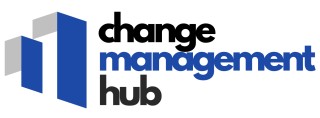
Understanding Outboarding
Defining Outboarding in the Employee Life Cycle
Outboarding is an essential phase in the employee life cycle that focuses on managing the transition of departing employees. Unlike offboarding, which primarily deals with the administrative aspects of an employee's exit, outboarding emphasizes a comprehensive approach to ensure a smooth transition for both the employee and the company. This process is crucial for maintaining a positive employee experience and safeguarding the company's reputation.
Importance of a Structured Outboarding Process
A well-structured outboarding process can significantly impact the overall employee journey. It involves more than just conducting an exit interview; it encompasses a series of events designed to support the departing employee while protecting the company's interests. Companies that prioritize outboarding often see better feedback from employees, which can enhance their standing in the industry and improve future recruitment efforts.
Why Companies Should Focus on Outboarding
For companies, outboarding is not just a box-ticking exercise. It is an opportunity to gather valuable insights that can inform future training development and employee onboarding strategies. By understanding the reasons behind an employee's departure, companies can address potential issues within their processes or culture. This proactive approach can lead to a more engaged workforce and a more effective onboarding process for new hires.
Linking Outboarding to Broader Change Management Strategies
Outboarding should be viewed as a key component of a company's change management strategy. By aligning outboarding with other change management initiatives, such as employee training and development programs, companies can create a more resilient and adaptable workforce. To explore more about integrating outboarding into broader change management efforts, visit the Open Door Center for Change.
The Role of Communication in Outboarding
Effective Communication: A Pillar in Transition
Communication acts as the lifeblood of any successful outboarding strategy. When managed well, it fosters a seamless offboarding and outboarding transition for the departing employee, ensuring they feel valued thereby preserving their connection to the company even post their tenure. This, in turn, enhances the overall employee experience while maintaining the integrity of your company's image in the industry. Efficient communication involves clearly articulating the reasons and processes involved in the employee's departure, carefully explaining how their role will evolve during this transition period, and outlining the official events and training development sessions they might need to attend. Companies that treat outgoing employees with transparency and dignity are more likely to receive positive feedback from them, an exchange that can prove beneficial during recruitment for the next stage employee. Moreover, a well-laid communication plan can help mitigate risks during the outboarding process. Human resources must maintain open lines of communication through all employee life cycle stages to ensure there is clarity in what's expected and how the change will affect everyone involved. This is where tools like Gemba boards – which facilitate real-time information sharing and feedback – come into play, integrating seamlessly into the outboarding plan and aiding the smooth flow of relevant events and updates. Understanding the role of Gemba boards in change management can provide deeper insight into optimizing communication strategies. Communication also allows for the broader team members, who might be affected by the changes, to express their concerns or suggestions regarding the outboarding phase. This feedback loop ensures that the changes not only align with strategic company goals but are also supported by those who continue to drive the company mission forward. Involving employees in these discussions enhances their commitment to the company cause, reinforcing the importance of well-executed communication in the outboarding and onboarding processes alike.Developing an Effective Outboarding Strategy
Crafting a Robust Outboarding Framework
Developing an effective outboarding strategy is a crucial step in ensuring a smooth transition for departing employees. It's not just about saying goodbye; it's about maintaining a positive relationship that extends beyond their last day at the company. A well-structured outboarding process can provide a seamless transition, much like a well-planned employee onboarding process. Let's delve into the key components of creating an outboarding strategy.
- Assessment and Planning: Start with a thorough assessment of the needs and priorities of your company and the departing employee. Understanding the specific context, including industry norms and employee life cycle, will enable the creation of a tailored plan.
- Documentation and Knowledge Transfer: An outboarding event should ensure all necessary documentation is in place. Facilitating a knowledge transfer process can help retain essential information within the company, which is often overlooked during offboarding. Consider integrating feedback loops to continuously improve this stage.
- Communication and Training Development: Clear communication is crucial throughout the outboarding journey. Utilize meeting rooms effectively for discussions and training development sessions to prepare the remaining employees for the departure transition.
- Employee Support Systems: Offering support, such as career counseling or networking opportunities, ensures the departing stage employee leaves with a positive impression. Providing support can also involve setting up exit interviews to gather valuable insights into the employee experience.
- Feedback and Continuous Improvement: Just as the onboarding process is refined, outboarding should be a priority for continuous enhancement based on employee feedback. Attendees of these processes should feel heard, ensuring the company remains competitive as it evolves.
A successful outboarding strategy acts as the final phase of the employee journey, mirroring perhaps the staged nature of events seen at industry gatherings in places like Las Vegas. By effectively managing this process, companies not only enhance their overall employee experience but also maintain valuable connections, potentially turning departing employees into future advocates or official exhibitors representing the brand positively.
Legal and Ethical Considerations
Addressing Legal and Ethical Boundaries During Outboarding
Navigating the complexities of legal and ethical considerations is a crucial aspect of the outboarding process. This phase brings distinct challenges as companies aim to uphold their commitment to both their employees and the industry standards. Acknowledging legal obligations helps safeguard the company and ensures departing employees experience a professional transition. Firstly, it’s vital to examine employment agreements, focusing on non-compete clauses and confidentiality obligations. These sections of an employee’s contract may affect their future job prospects and dictate the company’s responsibilities. Compliance with these parameters not only prevents potential legal disputes but also supports a fair offboarding experience. Companies must also attend to the ethical treatment of departing employees, which involves transparency and respect throughout the process. Fostering a culture that prioritizes ethical conduct enhances trust and reputation, making companies attractive places for future recruitment. Additionally, respecting privacy and data protection laws when handling personal information ensures the company's actions align with regulations. Organizations often seek counsel from human resources and legal experts to stay informed about industry regulations. This consultation aids in effectively managing risks associated with outboarding events and helps companies attend to priority points specific to job transitions. By aligning the outboarding strategy with legal and ethical guidelines, companies not only mitigate risk but also demonstrate a commitment to maintaining a positive employee life cycle. This adherence to best practices positions organizations as responsible leaders in employee management, thus providing a smooth transition for departing employees while sustaining morale among stage employees. Whether the company is hosting events in meeting rooms or initiating training development sessions for ongoing employees, it’s crucial to remain cognizant of legal responsibilities as part of the broader employee journey. As companies continuously improve their employee onboarding and offboarding processes, the journey remains a shared responsibility between human resources and cross-departmental leadership.Supporting Employees Through Transition
Supporting the Workforce during Transition
Navigating through the outboarding process requires a multifaceted approach to support employees transitioning out of the company. As this journey can be as significant as the onboarding process, companies need to apply the same level of dedication and resources. Here are some key considerations:- Emotional Support: It is crucial for human resources to acknowledge the emotional impact on the departing employee. Providing access to counseling services or peer support groups can help navigate this life cycle stage.
- Transparent Communication: As discussed earlier, effective communication is vital. Clear and honest information about next steps, benefits continuation, and future opportunities can alleviate anxiety and enhance employee experience.
- Career Assistance Programs: Offering training development or job interview coaching can empower employees to confidently step into their next role. This not only supports the individual but also reflects well on the company’s reputation.
- Exit Interviews: Gathering feedback through comprehensive exit interviews allows for continuous improvement of the employee life cycle. Insights gained can refine recruitment practices and the overall journey.
- Celebratory Events: Organizing a farewell event in a dedicated meeting room or events place reinforces positive experiences. This recognition of their contributions, like official exhibitors at industry events, can leave a lasting, favorable impression.
Measuring the Success of Outboarding
Evaluating Outboarding Effectiveness
The success of the outboarding process is critical for companies aiming to ensure smooth transitions for departing employees and maintain a positive employee experience. Measurement is a powerful tool in understanding how effectively the company manages its outboarding events. A structured approach not only helps in spotting areas for improvement but also in maintaining industry standards and enhancing the company’s reputation.
To begin with, feedback from both outgoing employees and attendees during the outboarding events is vital. This feedback could be collected through surveys or structured interviews post-event. It offers insight into the employee’s journey, highlighting the strengths and weaknesses of the outboarding process. Consistent feedback collection ensures that companies can make timely adjustments and address issues that might otherwise affect departing employees negatively.
Another method is to measure the time taken for each stage of the outboarding and offboarding outboarding process. Companies should focus on any delays that might occur in transferring duties, concluding employee training sessions, and the overall communication conveyed by human resources. Streamlining these stages may significantly improve employee satisfaction and reduce potential disruptions within the organization.
Companies should also assess the outcome of outboarding in terms of legal and ethical compliance. This involves reviewing the company's adherence to industry rims and offboarding legal requirements. Regular audits of this nature can protect companies from potential legal challenges and contribute to ethical business practices.
Lastly, evaluating the impact on remaining employees is essential. The company should note any changes in team morale and productivity following an employee's departure. Human resources should actively engage with current employees to gauge their perspectives and ensure that the departing employee’s experience doesn’t lead to misconceptions or unrest among the team.
Prioritizing these evaluation metrics not only promises a well-managed employee life cycle but also ensures a robust offboarding and outboarding framework, safeguarding the company's standing in both the local and broader industry.”













